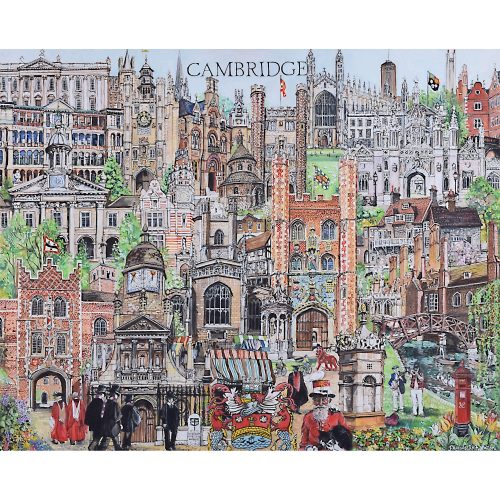-
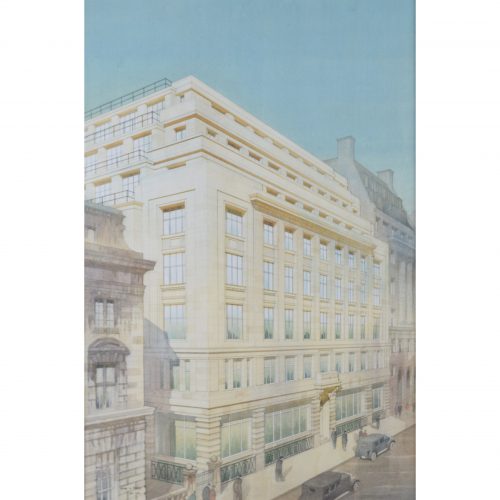
Cyril A. Farey
Design for an Art Deco office building, (1932)
Signed ‘Cyril A Farey Del 1932’ Pencil and watercolour 23 x 16 in A glorious and large drawing of an as-yet unidentified art deco building. This picture is classic Farey, with the reflections in the foreground and the bright blue sky. Biographical details and other works by Cyril Farey can be found here. If you are interested email info@manningfineart.co.uk or call us on 07929 749056. -
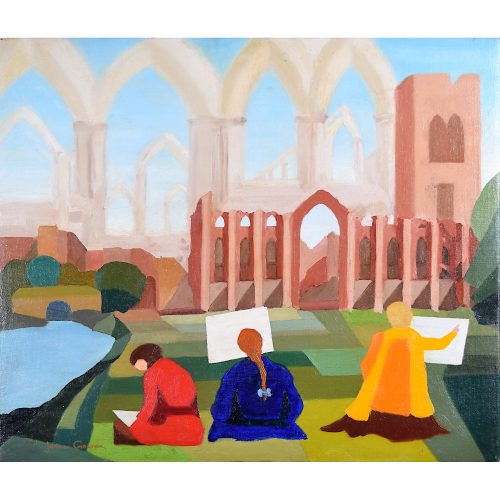
James Gowan (1923, Glasgow - 2015, London) Fountains Abbey (1973)
52x62cm Oil on Canvas Signed 'James Gowan' lower left Inscribed to reverse 'Fountains Abbey 1973 James Gowan No 199' For biographical details and other paintings by Gowan click here. The present work exhibits many of the characteristics obvious in his architectural works. There is a very strong architectural composition. The landscape and sky are approached in almost cubist fashion, reminiscent of the Toblerone-shaped roof of the Leicester Building, whilst the figures have a carefree feel to them. And here indeed are the gothic towers and flying butresses that we know inspired Gowan when designing the Leicester Engineering Building, being captured by the brightly-dressed members of an art class, splashes of primary colour in an already colourful landscape. If you are interested email info@manningfineart.co.uk or call us on 07929 749056. -
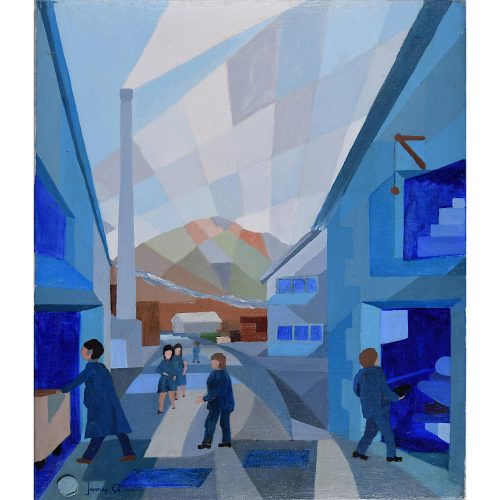
James Gowan (1923, Glasgow - 2015, London) The Blue Mill at Backbarrow
62x52cm Oil on Canvas For biographical details and other paintings by Gowan click here. The present work exhibits many of the characteristics obvious in his architectural works. There is a very strong architectural composition. The landscape and sky are approached in almost cubist fashion, reminiscent of the Toblerone-shaped roof of the Leicester Building, whilst the figures have a carefree feel to them. Backbarrow was the place where the blue pigment ultramarine (or dolly blue - used to return brilliant whiteness to yellowed fabrics) was produced in an old mill building by the Lancashire Ultramarine Company. Dust from the production gave the entire village a blue tint until production ceased in 1981. The factory is now a hotel and it maintains a display of machinery used in the factory. If you are interested email info@manningfineart.co.uk or call us on 07929 749056. -

Macdonald (Max) Gill (1884-1947)
Australia: Her Natural and Industrial Resources (1950)
His Majesty’s Stationary Office, SO Code NO. 70-538-5-2 Lithographic poster 51 x 76cm (20 x 30 inches) Click here for biographical details and other works by the artist. Condition generally very good, a little spotting and the odd very short edge tear to margin not affecting image. If you are interested email info@manningfineart.co.uk or call us on 07929 749056. -
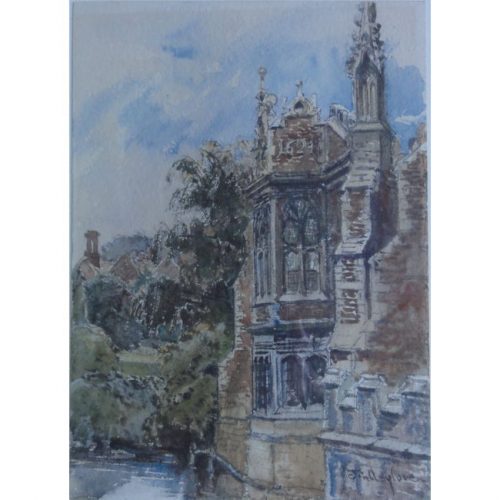
John Fulleylove (1845-1908)
The Old Library, St John’s College, Cambridge
Signed lower right “Fulleylove” Watercolour 19x13cm (7×5 inches) Please click here for the matching watercolour of the Kitchen Bridge together with biographical details and other works by the artist. If you are interested email info@manningfineart.co.uk or call us on 07929 749056. -
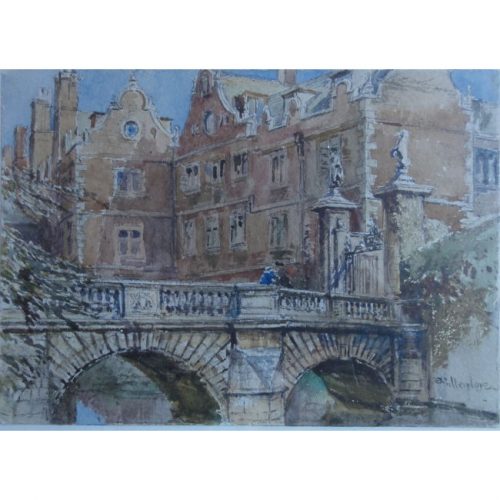 John Fulleylove (1845-1908) The Kitchen Bridge, St John’s College, Cambridge Signed lower right “Fulleylove” Watercolour 13 x 19cm (5 x 7 inches) Please click here for the matching watercolour of the Old Library together with biographical details and other works by the artist. If you are interested email info@manningfineart.co.uk or call us on 07929 749056.
John Fulleylove (1845-1908) The Kitchen Bridge, St John’s College, Cambridge Signed lower right “Fulleylove” Watercolour 13 x 19cm (5 x 7 inches) Please click here for the matching watercolour of the Old Library together with biographical details and other works by the artist. If you are interested email info@manningfineart.co.uk or call us on 07929 749056. -
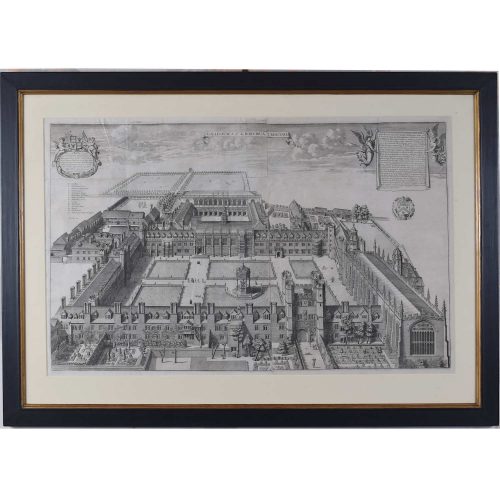
David Loggan (1634 - 1692)
Trinity College, Cambridge (1690)
Engraving 80 x 50 cm Loggan was born to English and Scottish parents, and was baptised in Danzig in 1634. After studying engraving in Danzig with Willem Hondius (1598-1652 or 1658), he moved to London in the late 1650s, going on to produce the engraved title-page for the folio 1662 Book of Common Prayer. He married in 1663 and moved to Nuffield in Oxfordshire in 1665. Loggan was appointed Public Sculptor to the nearby University of Oxford in the late 1660s, having been commissioned to produce bird’s-eye views of all the Oxford colleges. He lived in Holywell Street as he did this. The 'Oxonia Illustrata' was published in 1675, with the help of Robert White (1645 - 1704). Following its completion, Loggan began work on his equivalent work for Cambridge; the 'Cantabrigia Illustrata' was finally published in 1690, when he was made engraver to Cambridge University. The 'Oxonia Illustrata' also includes an engraving of Winchester College (Winchester and New College share William of Wykeham as their founder) whilst the 'Cantabrigia Illustrata' includes one of Eton College (which shares its founder, Henry VIII, with King’s College). Bird’s-eye views from this era required a particular talent as an architectural perspectivist; it was not until 1783 that it became possible for artists to ascend via hot air balloons and view the scenes they were depicting from above. Loggan thus had to rely on his imagination in conceiving the views. Loggan’s views constitute the first accurate depictions of the two Universities, in many ways unchanged today. Whilst the Oxford engravings were produced in reasonable numbers and ran to a second edition by Henry Overton (on thicker paper and with a plate number in Roman numerals in the bottom right-hand corner), those of Cambridge were printed in much smaller numbers. The Dutchman Pieter van der Aa published some miniature versions of the engravings for James Beverell’s guidebook to the UK, 'Les Delices de la Grande Bretagne' (circa 1708). The contemporary artist Andrew Ingamells has produced a highly-acclaimed series of etchings which bring Loggan’s original vision up to date. Condition: generally very good; printed on two sheets, folds as issued. A few creases to top area. As a multi-folded plate in the published book, Trinity has normally suffered and is normally trimmed closely and has damage; this particular example has instead good margins outside the platemark and without damage to the folds. A very good copy of Trinity. If you’d like to know more, please email info@manningfineart.co.uk or call us on 07929 749056. -
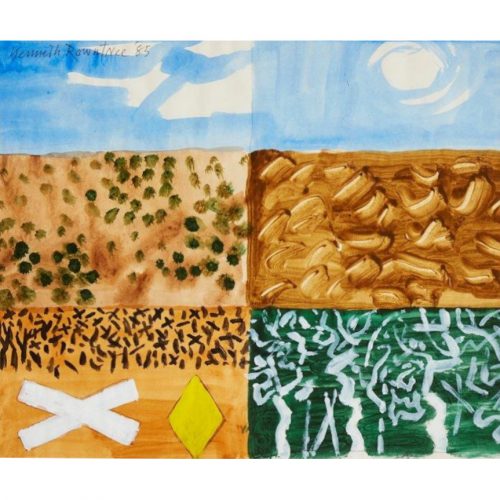
Kenneth Rowntree
Abstract Australian Landscape
Watercolour 27.5 x 33cm Signed (top left) and dated 'Kenneth Rowntree '85' Provenance: Anderson & Garland Studio sale of Kenneth Rowntree lot 263 Tuesday 8 September 2009 For biographical details and other works by Rowntree click here. Rowntree visited Australia in 1984/85. In this painting he picks up various vignettes from the Australian landscape in six separate blocks. Two relate to the sky, with almost-unbroken blue skies stretching from horizon to horizon, three relate to desert areas, with a whole array of different textures, and one is a luscious green. In one of the desert scenes he has picked out two road signs, in typical Rowntree fashion, reducing them to their simplest form. In her essay Kenneth Rowntree: A Strange Simplicity (published in Kenneth Rowntree A Centenary Exhibition Published by Moore-Gwyn Fine Art and Liss Llewellyn Fine Art, on behalf of the artist’s estate, on the occasion of the centenary of Kenneth Rowntree’s birth) Alexandra Harris makes reference to this painting noting:Later, in 1986, just when the young David Hockney was collaging the signs and road-markings of Route 138 in Pearblossom Highway, Rowntree was in Australia painting yellow diamond-shaped road-signs as bright icons in open country. Wherever he went, Rowntree captured both the unfamiliarity of places and their relationship to things he knew. Heading into the Australian outback, he painted a road-sign as he would paint a rail signal at Clare in Suffolk or nautical markers at Swansea.
Hockney's 1986 Pearblossom Highway may be seen here in the Getty and it is worth noting that Rowntree was in fact painting the yellow sign in 1985, so a year before Hockney. If you are interested email info@manningfineart.co.uk or call us on 07929 749056. -
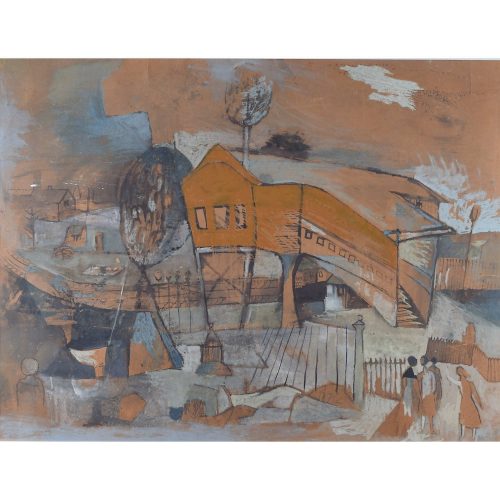
Gwyneth Johnstone (1915 - 2010)
The Railway Bridge
Mixed media 64 x 83 cm Signed lower left in paint, and monogrammed lower left in pencil. Provenance: the estate of the artist. Johnstone explores the possibilities of abstraction in this semi-delirious depiction of a railway bridge. Painted in tones of burnt umber, orange, grey, and black, the picture is populated by warped railings, bending trees, and staring onlookers, all of which centre around a railway line and bridge. Tanya Harrod described Johnstone's painting style a 'a hallucinogenic, haunting pastoral', and that is immensely evident in this picture. Johnstone was an English painter who worked mostly in oils and often depicted poignant modern landscapes. Her parents were the musician Nora Brownsford and the artist Augustus John. She studied at the Slade School of Fine Art, where she established lifelong friendships with fellow artists Mary Fedden and Virginia Parsons. After the Slade, Johnstone was taught academicised cubism by the painter André Lhote at the Académie de la Grande Chaumière in Paris. For a brief period in the early 1950s she took life classes with the surrealist artist Cecil Collins at the Central School of Arts and Crafts. -
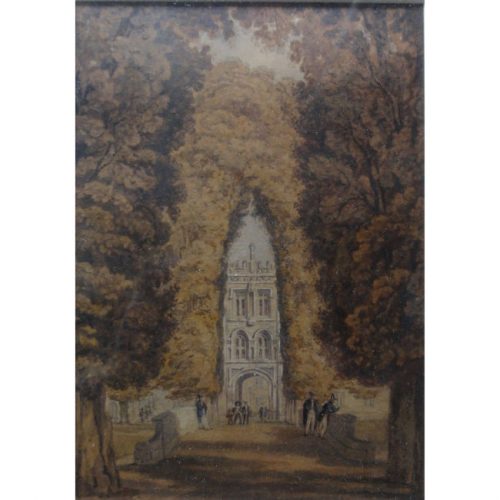
James Sargant Storer (1771–1853)
Trinity College Gateway from The Backs, Cambridge, c1820
Watercolour 19×13.5cm (7.4×5.3 inches) unframed This is the original watercolour for an engraving published as The Avenue by James & Henry Storer c.1820 in Delineations of Trinity College. The exquisitely detailed watercolour showing academical figures standing on Trinity Bridge as viewed from the backs is framed in its original nineteenth century gilt slip behind nineteenth century glass. Provenance: by decent from the artist. Storer was a topographer with an interest in ancient architecture, making drawings and engraving the plates himself. From 1814 he worked in conjunction with his eldest son, Henry, who predeceased him in 1837. They were buried next to each other at St James’s Chapel in Pentonville, now Joseph Grimaldi Park (named after the clown, Grimaldi who was buried there in 1837 and whose railed grave remains to this day). If you are interested email info@manningfineart.co.uk or call us on 07929 749056. -
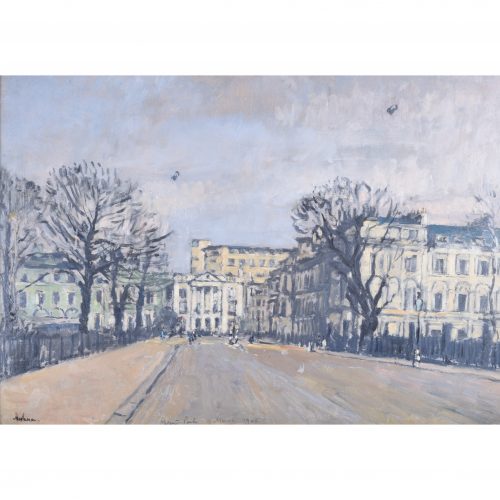
Paul Ayshford Methuen (1886 - 1974)
Barrage Balloons, Regents Park, 9 March 1940
Oil on board 36 x 52 cm Signed lower left and titled and dated lower centre. Lord Methuen's oil painting of Regent's Park on a winter's day, with barrage balloons above. Barrage balloons were set up - stationed at an altitude of around 4,000 ft - as a barrier to enemy aircraft. The steel cables used to tether the balloons would take an enemy aeroplane out of the sky if it were to hit the cable. The UK had thousands of them, filled partly with hydrogen and operated largely by women, to protect significant towns, cities, and military installations. These strange blobs floated over the country, just asking to be captured by artists. Methuen had rejoined his regiment (serving as a Captain) in 1939 but was likely stationed in London for a while, when he might have had the opportunity to capture this scene. When Methuen painted the scene in 1940, Britain was still in the stage of the phoney war. The Battle of Britain did not commence until 10 July, and the Blitz not until 7 September - but Britain's defences were ready. Barrage balloons were important all the way through the War: they defended London against the V2 missiles; they defended the D-Day invasion fleet; and they protected the invasion army for months. Indeed, it was said that the vast amount of material brought into the UK from the States prior to D-Day would have caused Britain to sink under the sea, were it not for the huge number of barrage balloons holding the country up... Condition: excellent. Recently revarnished. If you’d like to know more, please email info@manningfineart.co.uk or call us on 07929 749056. -
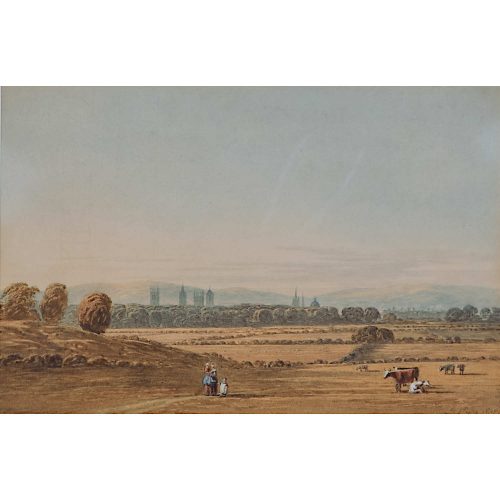
George Pyne (1800-1884) Panoramic View of Oxford (1849)
Watercolour 18.5x28cm Pyne was the elder son of William Henry Pyne, the publisher artist behind the monumental History of the Royal Residences, and son-in-law of John Varley – two founders of the Society of Painters in Watercolours. Living in Oxford from the 1850s until his death, he brought the hand of an architectural draughtsman to his views of Oxford, the works for which he is best known, but with an artist’s ability to represent the romance of old stone. His views of Cambridge and Eton also contribute to his valuable and historical record of the period. If you are interested email info@manningfineart.co.uk or call us on 07929 749056. Condition: Very good. Signed l/right 'G Pyne 1849'. -
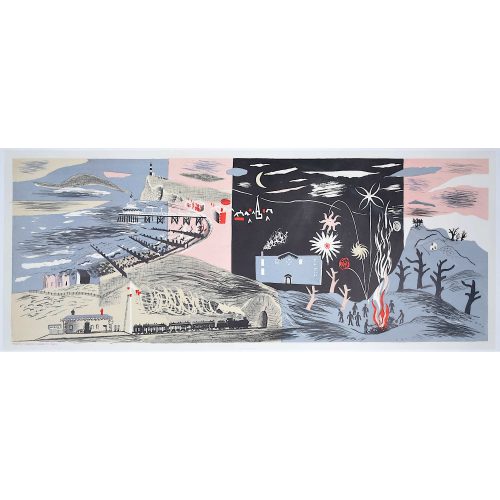
John Piper C.H. (British 1903-1992) Nursery Frieze II
500 x 1250 mm Lithograph 1936 One of Piper's many seascapes, Frieze II is an exercise in abstract capriccio. Piper draws together the muted grey, pink, and blue of the lithograph's fragmented background with foreground details in black, white, and bright red, picking out particular moments of the frieze for the viewer. The lighthouse has no keeper; the beach and the pier are empty; the train has neither passengers nor driver. The church at the top of the rocky hill is a brilliant cubist borrowing, showing both the West end and the North side simultaneously - and it has no congregation. The only human figures present in the frieze are those collected around the bonfire, watching the flames and the show of fireworks. The scene is at once devoid of people and intensely human. Piper was just 24 when he made Frieze II. If you are interested, please email info@manningfineart.co.uk or call us on 07929 749056. Condition: Generally very good, backed to linen with small - and largely not visible - areas of restoration. -
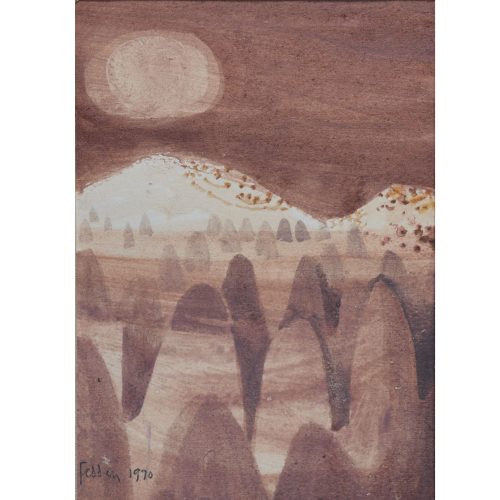
Mary Fedden (1915-2012) Moonlight at Cappadocia (1970)
Watercolour 18 x 13 cm Signed and dated lower left Lonely Planet says of Cappadocia, "As if plucked from a whimsical fairytale and set down upon the stark Anatolian plains, Cappadocia is a geological oddity of honeycombed hills and towering boulders of otherworldly beauty." Here Fedden presents an almost surreal landscape, where the forms of rocks, sky, and moonlight swim out of a subtle palette. If you are interested, please email info@manningfineart.co.uk or call us on 07929 749056. Condition: Excellent. In original frame with replacement mount in the style of the original. -

Brendan Neiland (b.1941)
Original Designs for Intercity Posters - Edinburgh and York
Collage, spraypaint and cut out 91x58cm (36×23 inches) each 1991 Click here for biographical details and other works by the artist. If you are interested email info@manningfineart.co.uk or call us on 07929 749056. -
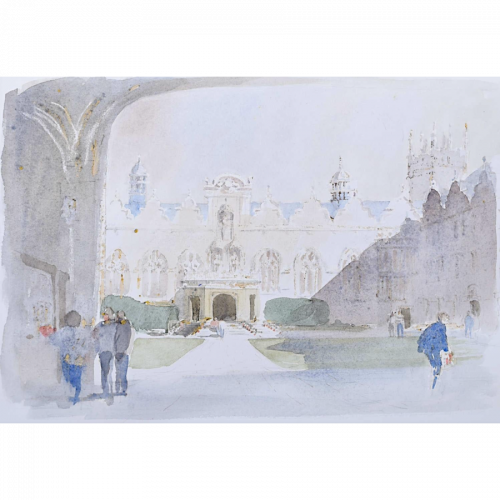
Hugh Casson (1910 - 1999)
Oriel College, Oxford
27 x 39 cm Watercolour We are lucky to be able to offer here the original watercolour from which Casson’s print of the College was produced. We also (elsewhere on the site) offer the print from his ever-popular Oxford and Cambridge series. Sir Hugh Casson was educated at Eastbourne College; St John’s College, Cambridge; and the Bartlett School of Architecture. Trained in the 1930s in the early modernist style, he taught at the Cambridge School of Architecture. After employment as a camoufleur during World War 2 by the Air Ministry, in 1948 he was appointed as director of architecture for the Festival of Britain. A close friend of the Royal Family, he undertook designs for the 1953 coronation, designed the interior of the Royal Yacht Britannia (“The overall idea was to give the impression of a country house at sea”), and taught the Prince of Wales to paint in watercolours. Amongst his architectural achievements are the Elephant House at London Zoo, the 1978 redevelopment of Bristol Docks, the Raised Faculty Building for The University of Cambridge, and a building for the Royal College of Art. He published a number of illustrated books, of which Casson’s Oxford and Casson’s Cambridge are probably the best known. A limited edition series of prints was produced from the paintings. Condition: excellent. If you’d like to know more, please email info@manningfineart.co.uk or call us on 07929 749056. -
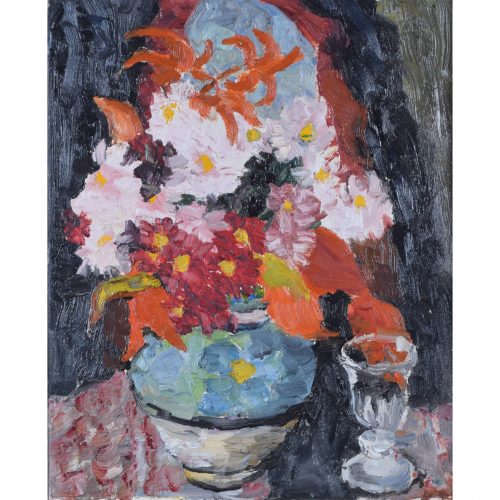
Eva Lucy Harwood (1893 - 1972)
Still Life with Flowers and Glass
Oil on canvas 49 x 40 cm ( 67 x 57 cm framed) A mid-century still life typical of Harwood's impasto style. Lucy Harwood was a British artist who studied art at the Slade just before the outbreak of the First World War. She had initially intended to be a professional pianist, but turned her attentions to visual art after becoming partially paralysed. She was one of the first students to enrol at Cedric Morris' East Anglian School of Drawing and Painting, where she focused on painting Post-Impressionist landscapes, painting just with her left hand. She moved to Upper Layham in Suffolk and is known for her landscapes of the area. Condition: generally very good. Handsome hand-finished frame. Provenance: Louise Kosman, Edinburgh. If you’d like to know more, please email info@manningfineart.co.uk or call us on 07929 749056. Click here to view our other still life pictures. -
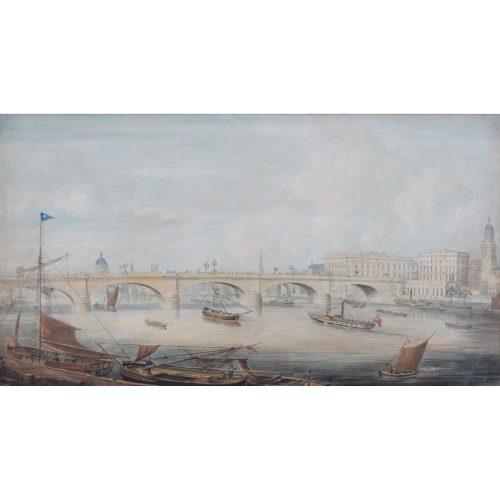
Gideon Yates (?1790-?1840)
1831 View on The Thames with London Bridge from the East Side showing Fishmonger's Hall, The Church of St Magnus the Martyr and St. Paul's Cathedral.
c.1831 29x54cm Watercolour unsigned Provenance: The Parker Gallery LIttle is known of the life of Yates. Even his date of death is disputed with some sources putting it at 1837. What is known is that he spent most of his working life in London, producing many detailed views of The Thames such as this one. His style is very distinctive, and this large and impressive view of London Bridge is a typical view. He is thought to have lived in Lancaster in 1811, and to have travelled widely throughout Britain and the Continent. His works are in public collections including the Victoria and Albert Museum. In this view, Thames barges are in the foreground with their distinctive brown sails. A steamship proceeds along the middle of The Thames. The first steamboat patented was in 1729, by John Allen an English physician. However it was not until 1783 that the first steam-powered ship, "Pyroscaphe," was demonstrated on the River Saône. By 1788 John Fitch in Philadelphia was operating a commercial service along the Delaware River were built in the United States. The first sea-going steamboat was the "Experiment" built by Richard Wright in 1813; by this point river services were becoming well established although it was not until 1815 that The Thames acquired its first successful services with "Margery" and "Thames" arriving from the Clyde where they had been in service for some years. Margate and Gravesend were the main destinations. The steamboat in this view is a paddlesteamer, with two side wheels. At the north end of London Bridge (on the far side from the viewer) is Fishmongers' Hall, St Magnus the Martyr Church is visible on the near side of the bridge, and St Paul's Cathedral is visible beyond. UK Government Art Collection item 6701 is another view of The Thames by Yates, also from The Parker Gallery. If you are interested email info@manningfineart.co.uk or call us on 07929 749056. -
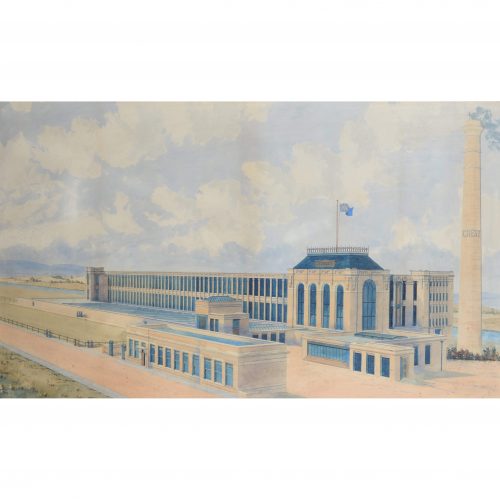
Crest Mill, Castleton, Rochdale, Lancashire (1906)
Watercolour 56 x 96 cm Crest Mill in Castleton, Rochdale, was built in 1906. It was designed by Sir Philip Sidney Stott, the English architect, civil engineer and surveyor. Crest Mill was demolished long ago. The mill engines were sent to the United States, but the ship carrying them sank in the Atlantic. Scott's mill chimneys all had two distinctive bands towards the top. Stott was born in Chadderton, Lancashire, and joined the family firm of architects upon leaving school. In 1883, he set up his own business, P. S. Stott, specialising in the design of cotton mills - he designed 22 mills in Oldham and 55 elsewhere in the county, plus many more in Europe, India and the Far East, amounting to 124 in total. He became a baronet in 1920, and was elected a Fellow of the Society of Architects and a member of the Royal Institute of British Architects. He was a significant figure in Lancashire mills, being responsible for 40% of the spindles laid down in Oldham between 1887 and 1914, and 44% of the increase in Lancashire's spinning capacity between 1887 and 1925. He retired a wealthy man having accumulated shares in the mills he designed. Condition: generally very good; some slight staining marks to mount, and possible faint time staining in areas. If you are interested, please email info@manningfineart.co.uk or call us on 07929 749056. Click here for more architectural perspectives.

